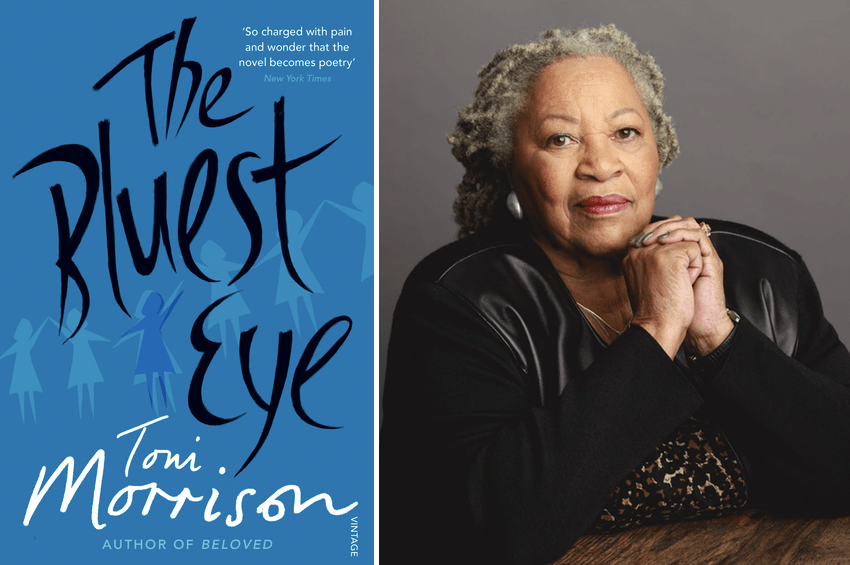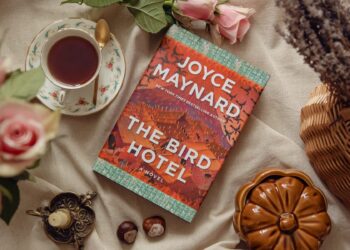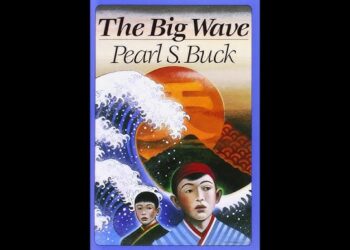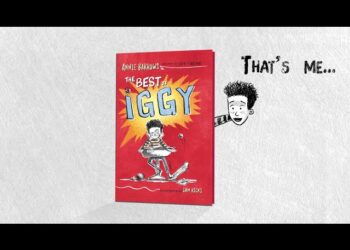Introduction
The Bluest Eye Summary And Themes By Toni Morrison The Bluest Eye, Toni Morrison’s 1970 debut novel, examines the terrible toll that racism and conventional beauty standards took on African American women in 1940s America. Pecola Breedlove, a young African American girl in Ohio who yearns for blue eyes—a representation of the Eurocentric beauty standards imposed upon her by a racist society—is a prime example of the novel’s painful and nuanced exploration of the desire for beauty, self-worth, and identity.
Morrison’s writing sheds light on the harsh realities of race, class, and self-hatred in the backdrop of a segregated America through a combination of rich symbolism, alternate narrative perspectives, and a very emotional examination of trauma and alienation. Even though The Bluest Eye is one of her early works, it represents a significant turning point in literary history, laying the groundwork for Morrison’s later masterpieces while tackling issues that are regrettably still pertinent to discussions about race and beauty today.
Summary of The Bluest Eye
The novel takes place mostly in the little Ohio town of Lorain in the 1940s. It revolves around Pecola Breedlove, a young African American girl who longs for blue eyes because she feels that they will provide her the acceptance, love, and beauty she so desperately seeks in the middle of her cruel and torturous life. The voices and experiences of numerous persons who either interact with Pecola or function as narrators of her story are weaved throughout the book to tell her tragic tale. Morrison presents a thorough examination of Pecola’s environment from a number of viewpoints, including her parents, the kids who either befriend or harass her, and a society that is struggling with its own racial identity.
Chapter 1: The Breedlove Family
The Bluest Eye Summary And Themes By Toni Morrison The novel opens with an introduction to the Breedlove family. Pecola’s parents, Cholly and Pauline, have both suffered deeply in their lives—Cholly, as a product of a violently oppressive racial system, and Pauline, who internalizes these racial attitudes to the point of neglecting her own family.
The Breedlove family lives in poverty, in a house that is far from the idealized American home. Pecola’s physical appearance, characterized by dark skin and plain features, contributes to her deep sense of unworthiness. Pauline, who works for a white family as a housekeeper, becomes increasingly alienated from her own daughter, preferring the beauty ideals associated with her white employers. Cholly’s erratic behavior and alcoholism result in physical and emotional abuse within the household.
The tension between the family members reflects broader themes of internalized racism and the devastating effects of societal rejection. Pecola’s family, much like the larger African American community in the novel, is fractured by racism both external and internal.

Chapter 2: Pecola’s Desire for Blue Eyes
The Bluest Eye Summary And Themes By Toni Morrison Pecola’s desire for blue eyes becomes symbolic of her desire to be accepted and loved in a society that has devalued her. She believes that if she could only have blue eyes, people would see her as beautiful, and she would no longer be subject to the bullying, rejection, and abuse that she faces daily.
The Bluest Eye Summary And Themes By Toni Morrison Her obsession with beauty stems from her need to escape from a world that constantly reinforces her worthlessness. The media, represented in the novel by the portrayal of Shirley Temple, reinforces a standard of beauty that Pecola cannot attain.
In her fantasies, Pecola imagines herself as a white girl with blue eyes, and she believes that if she could achieve this transformation, she would be free from the pain and suffering that haunt her. However, this longing is not only an expression of her desire for physical beauty but also an escape from the brutal realities of racism, familial dysfunction, and sexual violence.
Read more
Chapter 3: The Narrators—Claudia and Frieda
The Bluest Eye Summary And Themes By Toni Morrison The story of Pecola’s struggles is framed through the perspectives of two other African American girls, Claudia and Frieda MacTeer, who live in the same neighborhood.
The MacTeer family is slightly better off than the Breedloves, and Claudia and Frieda are depicted as strong, active children who have a more positive sense of self than Pecola. Claudia serves as the main narrator, reflecting on Pecola’s story and providing a critical lens through which the reader can understand the tragic nature of Pecola’s life.
Claudia’s narrative perspective is particularly important because she serves as a counterpoint to Pecola’s passive suffering. While Claudia initially reflects the childlike confusion and anger at the social systems that devalue Pecola, as she matures, Claudia’s understanding deepens. She recognizes the ways in which Pecola’s suffering is a direct result of the systemic racism and oppressive beauty standards that society imposes on young African American girls.
Chapter 4: Pecola’s Downfall
The Bluest Eye Summary And Themes By Toni Morrison As the story progresses, Pecola’s mental and emotional state deteriorates. After experiencing repeated sexual abuse by her father, Cholly, and rejection from her classmates and even her mother, Pecola’s hope for blue eyes becomes an obsession.
She retreats further into herself, eventually descending into madness. In her mind, Pecola’s desire for blue eyes is fulfilled when she imagines herself as a beautiful, light-skinned, blue-eyed girl who is finally worthy of love and admiration.
However, this imagined transformation does not provide the peace she longs for. Pecola’s breakdown reflects the psychological toll of living in a society that relentlessly marginalizes and dehumanizes her. The novel ends with Pecola’s complete psychological collapse, symbolizing the tragic consequences of the internalized racism that she and others around her face.
Chapter 5: The Impact on the Community
The Bluest Eye Summary And Themes By Toni Morrison The novel ends with an exploration of how Pecola’s story reflects the broader social dynamics within the African American community. Pecola’s tragic fate is both a personal tragedy and a collective one. Her struggles reveal the internalized racism that affects not only the white community but also African Americans who are complicit in the devaluation of darker-skinned people.
Morrison emphasizes how racism infiltrates every aspect of life, affecting self-worth, family dynamics, and community relations. Pecola’s story serves as a powerful critique of a society that equates beauty with whiteness and associates blackness with inferiority.
Themes in The Bluest Eye
1 Racism and Internalized Oppression: One of the central themes in The Bluest Eye is the impact of racism on the self-image and identity of African Americans. Pecola’s obsession with having blue eyes symbolizes the deep desire for acceptance in a society that devalues her because of her race. Morrison illustrates how racism infiltrates not only white society but also the African American community, where lighter skin and European features are often seen as more desirable.
The Bluest Eye Summary And Themes By Toni Morrison Internalized racism is evident in the behavior of characters like Pauline, who rejects her daughter in favor of the white family she works for, and in Pecola’s belief that her worth is tied to her appearance. The novel explores how systemic racism leads to a cycle of self-hatred that ultimately harms the individual and the community.
2 Beauty and Society’s Standards: The Bluest Eye offers a critique of society’s narrow definition of beauty, which is rooted in white, Eurocentric ideals. Pecola’s desire for blue eyes symbolizes the devastating effects of these standards on African American women, who are told that they are unworthy unless they conform to a particular image of beauty.
The Bluest Eye Summary And Themes By Toni Morrison The novel examines how the media, represented by Shirley Temple’s blonde hair and blue eyes, reinforces these beauty standards, leading Pecola to believe that her only hope for happiness lies in achieving this ideal. Morrison underscores how beauty is not merely physical but deeply tied to social status and acceptance.
Read more
3 Childhood Innocence and Loss of Innocence: The Bluest Eye Summary And Themes By Toni Morrison The novel contrasts Pecola’s tragic loss of innocence with the more innocent and hopeful experiences of other children, particularly Claudia and Frieda. As children, they still possess a sense of self-worth and confidence, which is gradually eroded as they witness the harsh realities of racism and the destructive effects of societal beauty standards.
Pecola’s innocence, however, is shattered early in life by abuse, neglect, and rejection. Her journey into madness is a symbol of the loss of innocence that occurs when a child is subjected to trauma, both within the family and in the broader social context.
4 Family and Dysfunction: Morrison explores the theme of family dysfunction in The Bluest Eye, particularly in the Breedlove family. Cholly and Pauline’s broken relationship, marked by violence, neglect, and emotional distance, is a reflection of the trauma they each experienced growing up. Their inability to love Pecola and each other results in the child’s emotional and psychological destruction.
The Bluest Eye Summary And Themes By Toni Morrison The family is depicted as both a source of safety and a site of harm. Pecola’s story reveals how broken families can perpetuate cycles of pain, and Morrison critiques the ways in which societal pressures exacerbate familial dysfunction.

5 Community and Collective Responsibility: The Bluest Eye Summary And Themes By Toni Morrison The Bluest Eye emphasizes the role of the community in shaping individual identity and perpetuating societal norms. The novel suggests that the collective silence of the African American community in the face of racism and prejudice plays a part in Pecola’s downfall.
While the characters are aware of Pecola’s suffering, they do little to intervene or protect her. Morrison highlights how societal norms and collective inaction can contribute to the marginalization and destruction of vulnerable individuals.
Read more
(FAQ)
1. What is the significance of Pecola’s desire for blue eyes?
Pecola’s desire for blue eyes symbolizes her yearning for beauty, love, and acceptance in a society that devalues her for her race and appearance. The blue eyes represent the Eurocentric ideals of beauty that dominate American culture, and Pecola believes that if she could attain this beauty, she would finally be worthy of love and happiness.
2. Is The Bluest Eye a story of racial injustice?
Yes, The Bluest Eye is a profound critique of racial injustice, particularly the internalized racism that African Americans experience due to societal beauty standards. The novel explores the damaging effects of racism not just from white society but also within the African American community itself, where lighter skin and European features are often seen as more desirable.
3. What role does the community play in Pecola’s tragedy?
The community’s silence and complicity in perpetuating harmful beauty standards contribute to Pecola’s downfall. Though they witness her suffering, the community members do little to intervene or offer support. Morrison uses the community as a reflection of larger societal issues, suggesting that collective inaction allows individual suffering to persist unchecked.
4. What is the relationship between Pecola and her parents?
Pecola’s relationship with her parents, Cholly and Pauline, is marked by neglect, abuse, and emotional distance. Both parents suffer from their own trauma, which prevents them from offering their daughter the love and support she desperately needs. Cholly’s abusive behavior and Pauline’s obsession with white beauty ideals create a toxic family environment that contributes to Pecola’s emotional collapse.
5. How does the novel portray childhood?
The Bluest Eye Summary And Themes By Toni Morrison The Bluest Eye contrasts Pecola’s loss of innocence with the more hopeful experiences of Claudia and Frieda. While Pecola is subjected to violence and neglect at a young age, the MacTeer sisters retain a sense of self-worth and innocence, highlighting the devastating impact that racism and familial dysfunction can have on a child’s development.
Read more

















